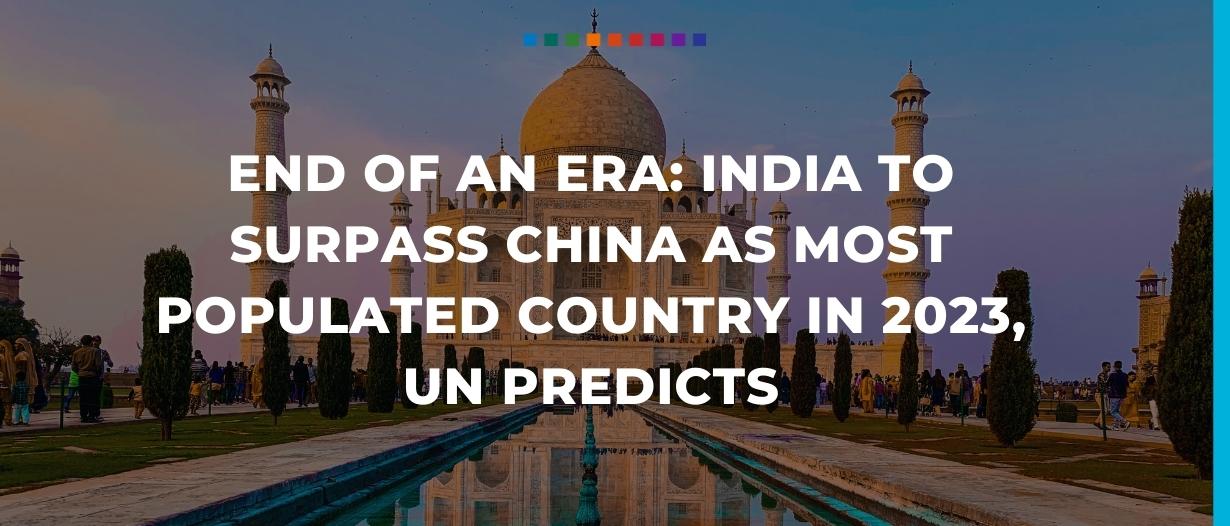Estimated reading time: 5 minutes
India is projected to surpass China as the most populous nation in 2023, according to the latest medium variant data from the United Nations Department of Economic and Social Affairs.
This will be the first time that a country other than China has held the top population spot since the 1750’s when China last overtook India.
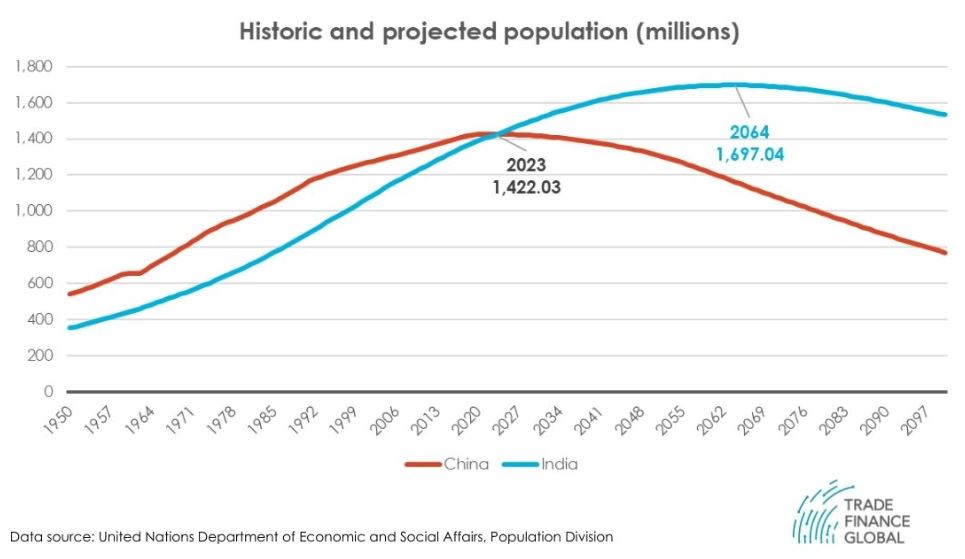
Demographers have been anticipating this reshuffling for quite some time with United Nations’s (UN’s) World Population Prospects 2019 suggesting that it would take place sometime in 2027.
The 2022 rendition of the UN’s World Population Prospects, released in early July, however, has accelerated this timeline by four years with the new expected date occurring in 2023.
To project what future population figures will look like, the UN’s Population Division analyses historical population figures alongside a variety of other metrics.
For India, current estimates suggest that the population will continue to grow, albeit at a slightly slower rate, until it reaches a peak in 2064 of nearly 1.7 billion, approximately 16.7% of the total estimated global population of 10.17 billion at that time.
For China, however, population decline is already on the horizon.
China’s negative population growth rate
According to UN data, China’s population did not grow in 2021 and is expected to be begin declining each year moving forward at an increasingly larger rate.
China’s population growth rate has experienced a general state of decline since the mid 1960s (when it sat above 3% annually), something that analysts largely attribute to a rapid drop in the country’s fertility rate throughout the 1970s and 1980s.
Further exasperating the decline, in 1980, the Chinese government implemented its one-child policy, only rescinded in 2016, further reducing both the fertility and population growth rates in the country.
China is not the only country to experience declining fertility rates.
India’s fertility rate has declined substantially since the 1950s (when it was 5.7 births per woman relative to today’s two births per woman), however this decline has been much slower than that in China (which has fallen from 6.5 births per woman in the 1950s to just 1.16 in 2021).
India’s population growth rate, however, is not expected to turn negative until 2063.
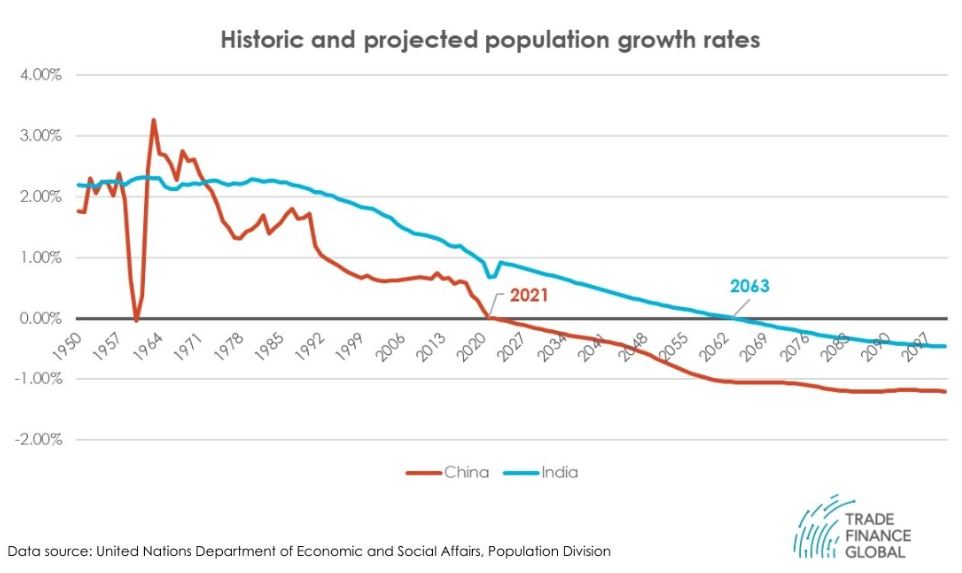
Population composition differs between China and India
Despite being similar in size, the composition of the two most populated nation’s inhabitants is quite different.
The population pyramid for China is more top-heavy than that of India, with much larger percentages of the Chinese population residing in the 45-59 year age brackets.
In China, the groupings for those aged 40 and below are each relatively smaller than those of older brackets, an unsurprising phenomena given that China’s one-child policy was first introduced some 40 years ago.
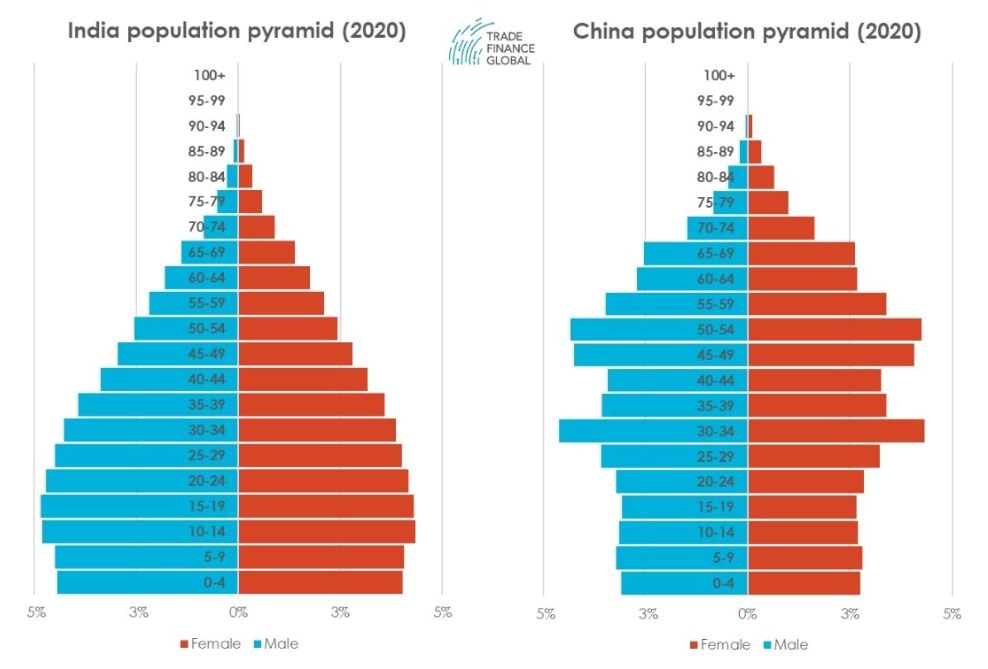
As the long-term impact of this population planning initiative is coming to the fore, China has a much smaller percentage of its overall population at childbearing age relative to India.
In India today, women of childbearing age (15 to 44 years according to the Indian Association of Preventive and Social Medicine) comprise 23.1% of the total population, compared to only 19.7% for China.
In absolute terms, this results in nearly 284 million child-bearing-aged women in China compared to nearly 319 million in India.
Couple this larger number of child-bearing-aged women in India with the higher average fertility rate in the country compared to China and it becomes clear why India is expected to overtake China.
Population growth around the world
While China and India are top of mind today when thinking about countries with large populations, there are other nations and regions of the world that are expected to drastically increase before the end of the century.
According to the latest UN data, in the next 30 years, nearly half of all population growth will occur in just eight countries – the Democratic Republic of the Congo (DRC), Egypt, Ethiopia, India, Nigeria, Pakistan, the Philippines, and Tanzania.
Five of these eight rapidly growing nations are located in Africa.
By the end of the century, Africa is expected to be nearly as populated as Asia, with five of the top ten countries by expected 2100 population being located on the continent (Nigeria, DRC, Ethiopia, Tanzania, and Egypt).
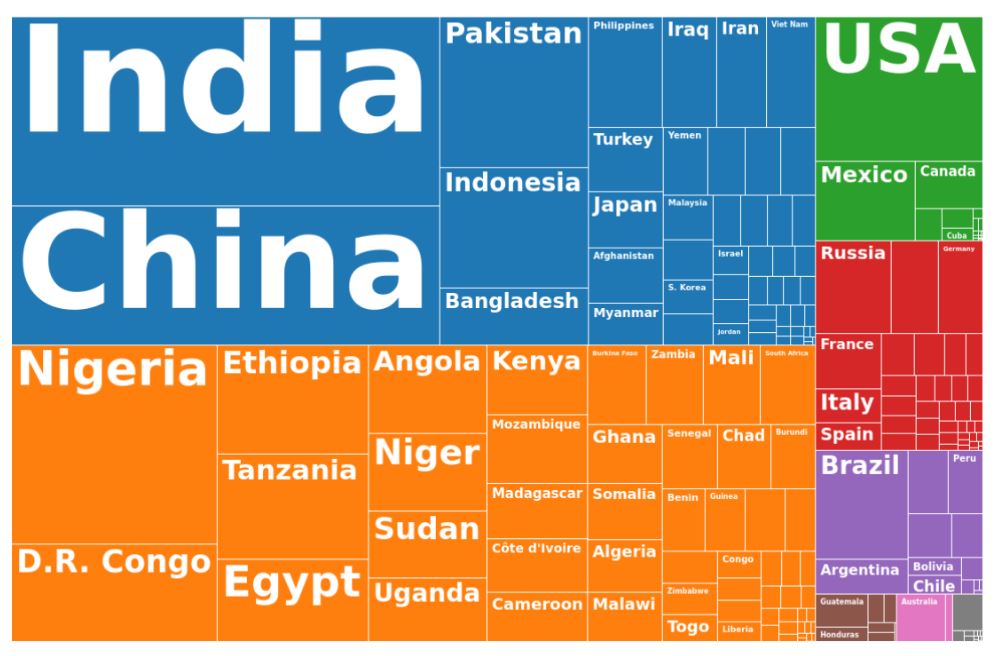
(From: populationpyramid.net)
While India and China are expected to remain as the most populated countries at the end of the century, the rapid expected population growth in Africa opens opportunities for businesses to invest into the infrastructure needed for the continent to support such a large number of inhabitants.















